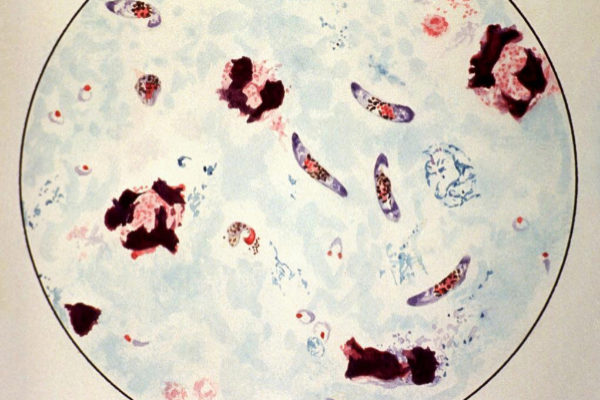- Malawi: Stage of the first large-scale malaria vaccine test
- Health: Malaria falls on the net: this way they eliminate the disease in Mozambique
For the first time a team of scientists has managed to create a detailed map of the genetic behavior of the parasite responsible for malaria, at all stages of its life cycle. This disease, which affects more than 200 million people worldwide and causes almost half a million deaths a year, has been especially elusive for researchers: its ability to reinvent itself by changing its own genome allows it to develop resistance against drugs They are designed against her. The results of the study, which are published this Thursday in the journal Science , open the door to the development of new medications and prevention strategies.
Although great progress has been made in the development of candidate vaccines in recent years , the role of almost half of the parasite genes that causes the disease is still unknown , which is an important barrier for researchers. An international team has used advanced single-cell analysis techniques to isolate that parasite in its different varieties and study in depth its genetic activity. "It is the first atlas of this type for a single-celled organism," explains Dr. Virginia Howick, a researcher at the British Wellcome Sanger Institute and first author of the study. "Until now it had been very difficult to describe the activity of genes at the unicellular level because we did not have the technology to do so, which has not appeared until these last years."
Thus, the team has been able to isolate the genetic activity at different stages of the parasite's life cycle, identifying when it is more likely that a given gene will play a key role in the development of the disease. This information will allow researchers to identify possible targets for the creation of vaccines and transmission blocking strategies. "Understanding the life cycle of the disease and the parasite that the cause is key to research; this atlas will help us really understand their nature, so that we can control them effectively," adds Howick.
Guilty by association
To map Plasmodium falciparum , the protozoan responsible for malaria, the team analyzed the activity of 1,787 parasites in 10 different phases, both in their stage within the transmitting mosquito and throughout its development in the human host. The researchers fed the insects with fake blood to capture the parasites they release in their saliva at the time of the bite and analyze their changes, comparing them with the parasites that remain in the salivary glands. In this way they were able to identify which genes are activated at each moment, a key information to reveal possible weaknesses. "Based on the behavior of the genes we already knew, we have been able to deduce the role of those that until now were totally unknown, through a process of guilt by association," summarizes Howick.
On that basis, the team was able to expand the atlas using other single-cell analysis techniques that allowed them to examine an additional 16,000 parasites obtained from the blood of mice, monkeys and humans infected with malaria. The comparison in different species allows to indicate similar behaviors in the genetic activity, a strategy that facilitates the identification of essential genes and that will help to develop valid techniques for the five varieties of the parasite that affect the human being . "The samples between different species allow us to identify in great detail those patterns that are maintained and those that diverge," says the researcher.
In the last stage of the investigation the scientists used samples of the parasites present in the blood of three patients with malaria who are currently undergoing treatment in Kenya. "We develop methods to capture the parasite's genetic activity in naturally infected people and demonstrate how laboratory data can be used as a reference to map the development of real samples," says Howick. "This opens the door to identifying which genes are active in real-world infections and how they differ from those grown in the laboratory."
Malaria resistance generally stems from changes at the molecular level that are reflected in the genome of the parasite and transmitted to other generations. That is why it is so difficult to put a brake on it. "To defeat malaria we need to understand all the tricks that the parasite uses throughout its life cycle," adds Dr. Mara Lawniczak, co-author of the work and also a researcher at the Wellcome Sanger Institute. "We face a disease that is becoming increasingly resistant to drugs, so we hope that the atlas serves as a reference to understand how parasites change their behavior in response to our efforts to control them. Knowing this will help us reveal how corner the parasites and eradicate them. "
According to the criteria of The Trust Project
Know more- Health
HealthListeria: The threat of the bacteria that survives in your fridge grows
Events: The owners of the residence of Soto del Real arrested for the death of an old woman due to malnutrition
Society Experts detect less jellyfish on the beaches of the Community this summer

